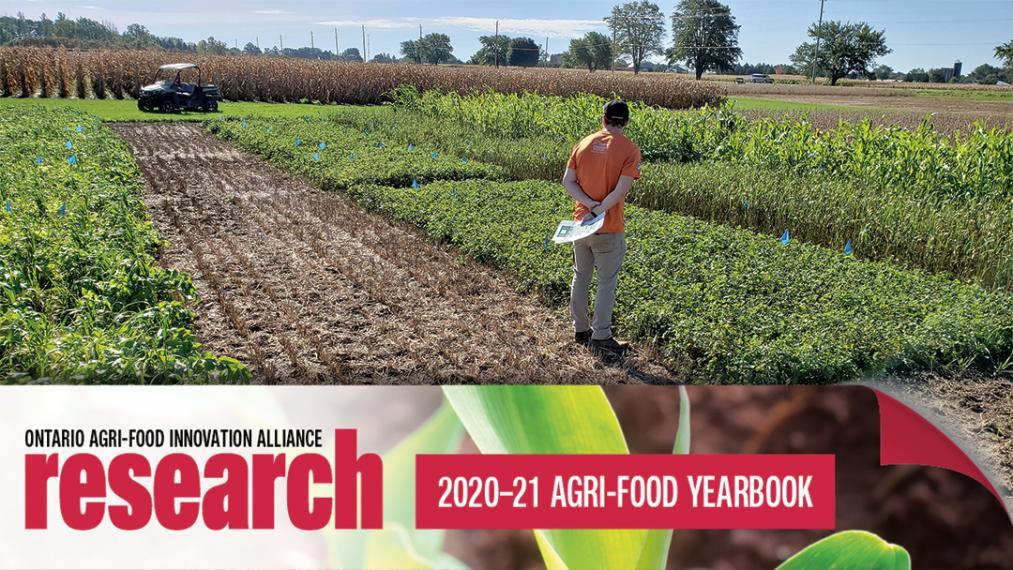A long-term look at cover crops

From mid-summer until the following spring, some Ontario fields lie fallow while others are covered with crops designed to rejuvenate the soil. University of Guelph researchers are investigating various combinations of cover crops to see which ones offer the best environmental and economic improvements. This long-term study is being conducted at the Ontario Crops Research Centre sites in both Elora and Ridgetown, coordinated by plant agriculture professors Dr. Manish Raizada and Dr. Dave Hooker, respectively.
In total, they’re overseeing more than 1,100 research plots. Numerous faculty members from the Department of Plant Agriculture and the School of Environmental Sciences are involved, with the potential for even more. “We’ve created a research platform with this project,” says Raizada.
Unlike other cover crop studies, Raizada and Hooker’s research employs multi-mixes, or different combinations of cover crops among two crop rotations and two tillage systems in the long term.
Three of Ontario’s main field crops — soybeans, corn and winter wheat — are being grown in different rotations, followed by either a variety of cover crops or the same cover crop each year. Factors being studied include drought resiliency, soil nitrogen status and organic matter, surface runoff, silage value and porosity — the ability of water to penetrate through the soil. The researchers are directly comparing the effects of multi-mixes and sole cover crops to determine which rotations reap the greatest environmental benefit, while also providing economic value to grain producers.
So far, the project has undergone only a few complete crop rotation cycles. Although the benefits of cover crops are expected to accrue over a longer period, Raizada says, preliminary findings point toward improved nitrogen availability in the soil. The researchers have also observed many similarities between the trials in Elora and Ridgetown. The breadth of temperature and weather conditions experienced between the two locations means the results of this research will apply to many temperate regions worldwide.
“I believe our findings will be quite generalizable, not just in southern Ontario but in temperate environments around the world,” says Raizada.
Collaborators include Drs. Tejendra Chapagain, Bill Deen, Kari Dunfield, Erik Glemser, Peter Johnson, Ralph Martin, Kim Schneider, Laura Van Eerd, Claudia Wagner-Riddle and Anne Verhallen, and officials from the Grain Farmers of Ontario.
This research project is funded by Grain Farmers of Ontario, the Canada First Research Excellence Fund, the Natural Sciences and Engineering Research Council, and the Ontario Ministry of Agriculture, Food and Rural Affairs through the Ontario Agri-Food Innovation Alliance. The Ontario Crops Research Centre is owned by the Agricultural Research Institute of Ontario and managed by the University of Guelph through the Ontario Agri-Food Innovation Alliance.
This article originally appeared in the 2021 Agri-Food Yearbook edition of Research magazine.
Written by Dianne Priamo.